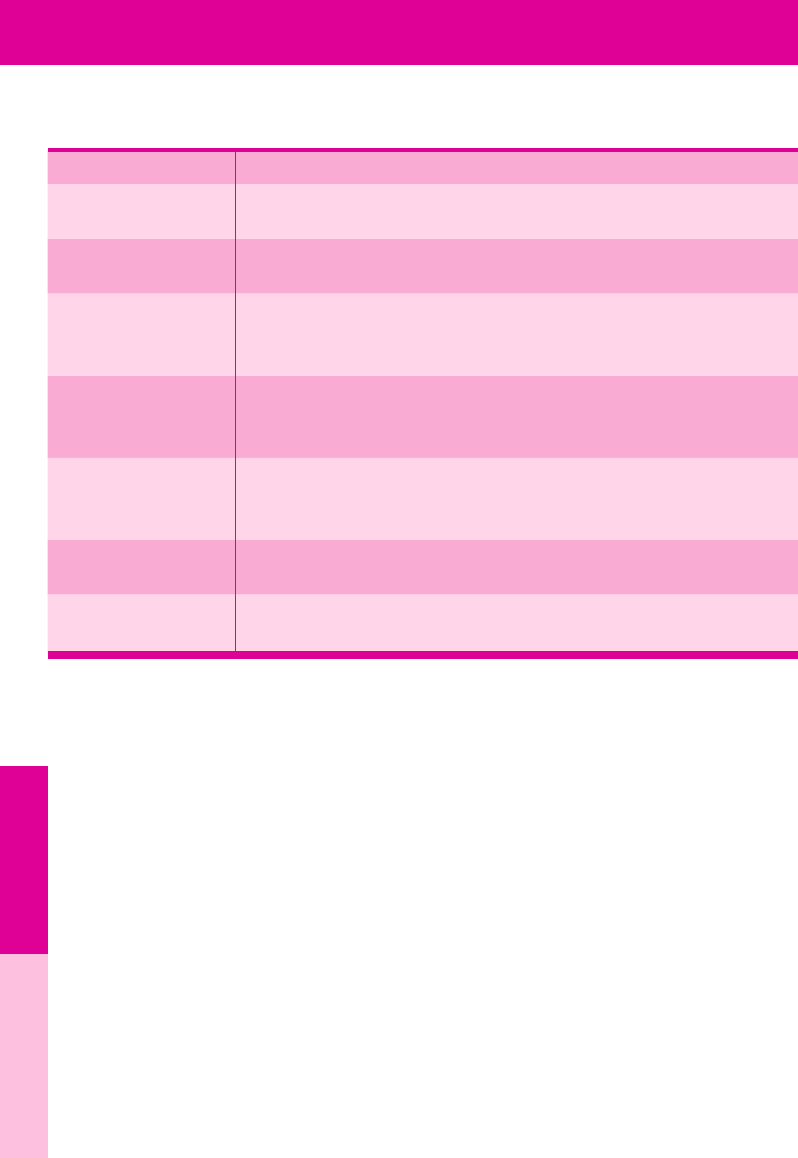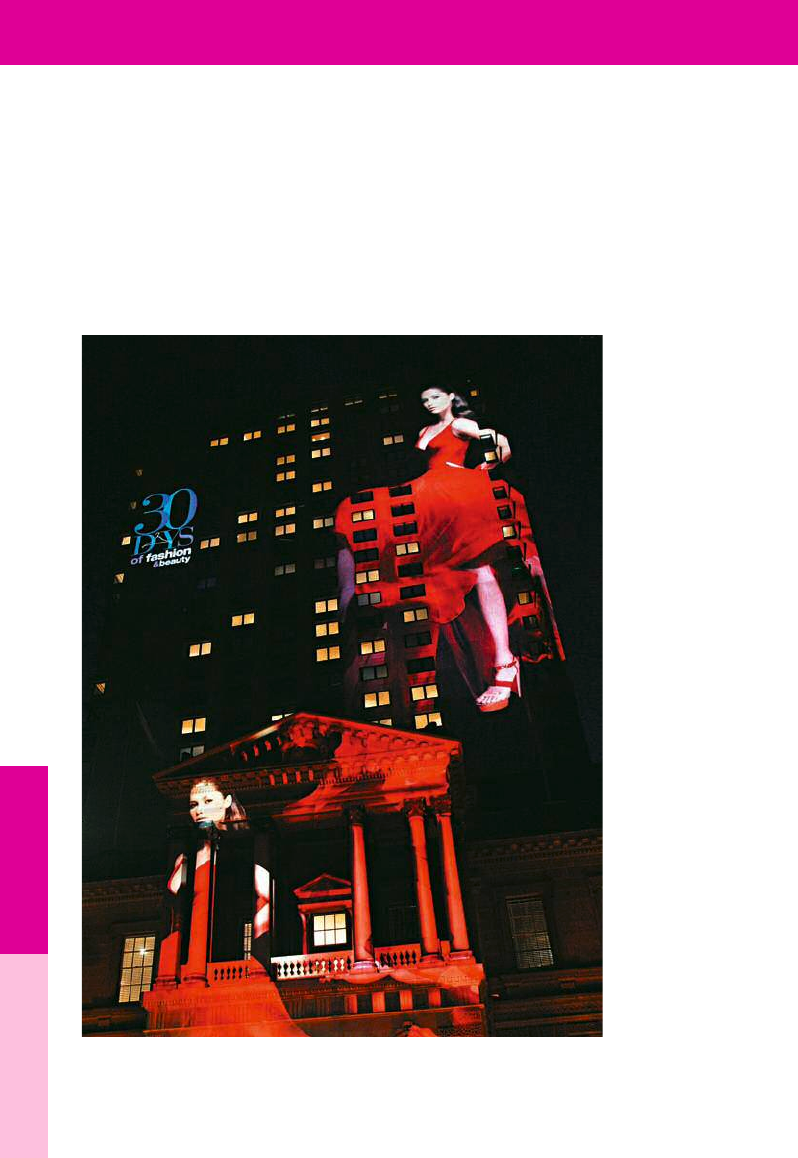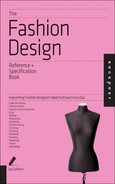
Job:02-30034 Title:RP-Fashion Design Ref and Spec Book
#175 Dtp:225 Page:204
204-209_30034.indd 204 2/27/13 5:14 PM
2 0 4 THE FASHION DESIGN REFERENCE + SPECIFICATION BOOK
(Text)
Chapter 20: Marketing
Most fashion designers that have reached the point where marketing is a con-
cern will have collected a wealth of information about their audience. Develop-
ing a marketing strategy entails organizing this data in a way that will deter-
mine how best to reach a targeted segment. The message that the designer
has so carefully crafted has to be revisited to evaluate how it will be ltered
through each media channel. The method of delivery must communicate the
essence of the brand and provide both perceived and tangible value. Each
part of the plan must have a budget and speci c goals and must generate the
metrics by which its level of success can be measured and analyzed. All these
efforts must be tightly coordinated to have the biggest impact and to build a
campaign that will move the designer forward.
Designers must observe and have answers to some basic questions: What is
the caliber of customer service? What is the level of customer satisfaction?
Have sales shown an increase? Has the press picked up stories? How does
the public perceive the brand? More sophisticated research is available as
well. Marketing rms specialize in studies of everything from tracking how
often a banner ad prompts a website visitor to click through, to tracking the hu-
man eye and how it moves when scanning a product. Forecasters are a big part
of marketing, always searching for what is cool and which groups empower a
product with this distinction. Researchers who study the mapping of the brain
and the role of addiction provide an even greater insight into buyers’ decision-
making processes, helping to predict what they might do next.
MINDING YOUR “P”S
Patterns
The best of marketing plans will fall on deaf ears if designers do not understand the type of
customer they are reaching. Designers must establish the buying patterns of their customer
base. How loyal are they to the brand? Is their purchase one of passion or just routine? Are
they there for a good deal? Do customers resist relying too much on any one product or ser-
vice because they prefer variety? Or, are they not the actual buyer but the support system for
someone who is?
P
O
ex
s
re
h
P
b
h
m
C
O
a
P
P
i
n
a
n
in
P
G
m
T
P
P
re
d
a
th
a
r
e
20
Job:02-30034 Title:RP-Fashion Design Ref and Spec Book
#175 Dtp:225 Page:204
204-209_30034.indd 204 2/27/13 5:14 PM

Job:02-30034 Title:RP-Fashion Design Ref and Spec Book
#175 Dtp:225 Page:205
Book
e:204
204-209_30034.indd 205 2/27/13 5:14 PM
2 0 5
(Text)
Personalizing
Once customers have been engaged, designers have to give thought to how personal the
experience will be. Everyone with whom a client comes into contact at every stage—from the
showroom, to the runway, to the salesroom, to the customer service department—must rep-
resent how the designer wishes to speak to their customers. So-called mystery shoppers can
help establish what is and isn’t working throughout the consumer experience.
Personal shopping events are vital tools for introducing prospective customers to a designer’s
brand. Sales associates that keep up-to-date client books (everything from their purchase
history to birthdays) are armed with information that allows them to communicate in a more
meaningful way.
Customers can also be given the power to participate in the brand’s decision-making process.
Offering them a vote in something will appeal to them on many levels, practical and emotional,
and provide designers with valuable information about their clientele.
Promotion
Promotion is about information, experience, and a reason to return. These initiatives stimulate
interest and action by providing incentives that offer entertainment, such as shows, tie-ins,
and exhibitions, or special value, such as contests, coupons, samples, and sales. Designers
need to understand which kinds of promotional efforts will grease the wheels of their market-
ing machine.
Public Relations
Good public relations establish credibility. A designer that moves into a new neighborhood
may profess the desire to be a part of that community, but actions speak louder than words.
The designer that does not take an active role will never be fully accepted.
Publicity
Publicity stems from human interest and newsworthiness. Thinking like an editor, not just a
reporter, will help designers to direct their materials to a specific outlet and its audience. A
designer should not be surprised if after pitching a story to a tabloid-style publication, it runs
an item slanted toward gossip rather than their work. Designers should offer a combination of
the familiar and the unexpected. Repetition will cultivate a level of comfort, dependableness,
and intimacy, while innovation will prevent the familiar from becoming stagnant and regularly
rekindle interest.
20
Job:02-30034 Title:RP-Fashion Design Ref and Spec Book
#175 Dtp:225 Page:205
Book
e:204
204-209_30034.indd 205 2/27/13 5:14 PM

Job:02-30034 Title:RP-Fashion Design Ref and Spec Book
#175 Dtp:225 Page:206
204-209_30034.indd 206 2/27/13 5:14 PM
2 0 6 THE FASHION DESIGN REFERENCE + SPECIFICATION BOOK
(Text)
MARKETING TOOLS
Medium Approach
Film and Video
These media showcase movement and energy. The designer’s cloth-
ing is featured to full advantage in motion.
Television
This is the arena of buzz—quick, easily digestible and repeatable
messages. Editing here is about the clever and the quotable.
Print
Articles, profiles, and photo editorials are story-telling vehicles. The
designer provides the substance, direction, and inspiration for journal-
ists to make their own.
Internet
Here content is king. Unlimited space allows for unrestricted sharing
and archiving, but the discerning designer will keep a distinctive pres-
ence online.
Photography
Photographic images translate the designer’s messages into visual
cues, styling with light, staging, and décor. They can be an arena for
artistic expression.
Graphics
Graphic symbols serve as maps and signposts for a brand. The de-
signer can use them as a visual shortcut into the minds of the public.
Advertising
Ads are a marketing instrument to wield based on budget, timing,
and relevance.
N
T
.
d
co
h
se
ra
C
Is
of
u
p
g
n
ga
C
Af
st
s
w
P
P
d
m
e
th
P
S
se
ke
“b
to
AVENUES
Direct
Online marketing and direct-mail pieces can provide the fashion designer with an immediate
foot in the door. The danger is always that they will end up filed under junk mail. Standing
alone, without a vocal advocate, these pieces must be distinctively designed and engaging.
This will mean different things at different times based on the current trends. The online pop-
up window is as apt to get the attention of the visitor as it is to annoy them.
Live
Events are wonderful settings for marketing endeavors because they provide environments
designed for shared experiences. Lectures, seminars, and workshops build a kind of camara-
derie around learning. Trade shows become the marketplace, a town square where the focus
is the sale. Fashion shows are entertaining and celebratory rituals that allow designers to take
their bow and for their audience to applaud.
20
Job:02-30034 Title:RP-Fashion Design Ref and Spec Book
#175 Dtp:225 Page:206
204-209_30034.indd 206 2/27/13 5:14 PM

Job:02-30034 Title:RP-Fashion Design Ref and Spec Book
#175 Dtp:225 Page:207
Book
e:206
204-209_30034.indd 207 2/27/13 5:14 PM
Marketing 2 07
(Text)
-
Networks
The mere idea of networking can produce anxiety in designers who are shy in social situations.
. When marketing themselves, their company, or their designs, the best plan of action is for
designers to focus on building small but powerful relationships. Networks built on this type of
connection are strong and act as magnets to others. The concept of six degrees of separation
hinges on the links being viable enough to produce actions. Even though online networking
services make the process easier, the same consideration should be made regarding quality
rather than quantity of connections.
Community and Partnerships
Isolation, self-imposed or otherwise, is a very real trend in society today. Community building
offers individuals access to groups of like-minded people. Fashion designers can tap into nat-
urally occurring communities around their products or service and foster their growth. Credible
partnerships with businesses, organizations, and institutions that are dedicated to a specific
group can extend the reach of a brand. When this interaction begins online, creating opportu-
nities to interact face to face increases its value. Marketing to members of these groups will
garner the best results when implemented with respect and authenticity.
Causes
Affiliations with philanthropic organizations are a great way to balance building visibility,
strengthening a reputation, and giving something back to the community. A designer can
sponsor or underwrite cultural projects or provide educational opportunities and scholarships,
whether or not directly related to the field of fashion.
Product Placement
Product placement is generally considered a success when it is seamless and the consumer
doesn’t realize that something has been placed. Sometimes very obvious, but witty place-
ments can connect with an audience as well. A form of product placement that fashion design-
ers often try is to send public figures, or their stylists, clothing in the hope that they will wear
them where they will be photographed.
Promotional Merchandise
Slapping a logo on a T-shirt is not enough in a marketplace where anyone can do it them-
selves. Just about anything with a printable surface is fair game in the name of brand mar-
keting. Printing a company logo on someone’s forehead or pregnant belly shows just how far
“branding” will dare to go. Shock-value aside, well-designed branded items have the potential
to become desirable in themselves and even collectable.
e
20
Job:02-30034 Title:RP-Fashion Design Ref and Spec Book
#175 Dtp:225 Page:207
Book
e:206
204-209_30034.indd 207 2/27/13 5:14 PM

Job:02-30034 Title:RP-Fashion Design Ref and Spec Book
#175 Dtp:225 Page:208
204-209_30034.indd 208 2/27/13 5:14 PM
2 0 8 THE FASHION DESIGN REFERENCE + SPECIFICATION BOOK
(Text)
Guerilla Marketing
Part of the marketing mix for any brand is about taking it to the street. This marketing ap-
proach has its roots in skywriting and blimps. Today the more outrageous and unexpected the
better: floor graphics, logo or video projections on public buildings, moving picture ads in train
tunnels, even eye-level and urinal cake advertising in men’s rooms! In fashion, the concept
of the pop-up store has become a great way to infiltrate and capture new audiences; these
temporary venues prompt public engagement based on a mix of novelty, convenience, and a
sense of immediacy.
S
At
a
l
a
a
In
W
sa
se
a
c
a
30
Days of Fashion & Beauty, projection on the Intercontinental Hotel
Sydney, Australia, 2008
Photograph by Sergio Dionsio/Getty Images.
20
Job:02-30034 Title:RP-Fashion Design Ref and Spec Book
#175 Dtp:225 Page:208
204-209_30034.indd 208 2/27/13 5:14 PM
..................Content has been hidden....................
You can't read the all page of ebook, please click here login for view all page.
